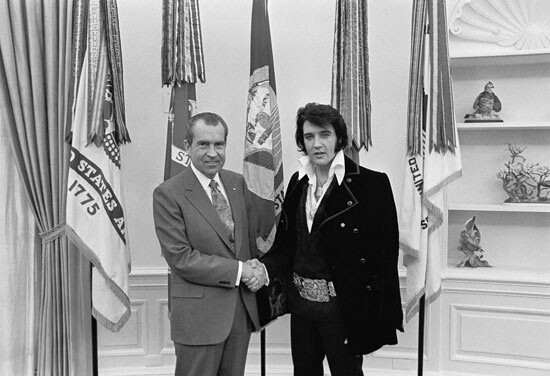What do you store in a bank? You store time. But is the money that is stored in the bank my past time—the time that I have spent in the past? Or does this money give me the possibility of buying a future?
These distinctions between storing and investing are linked to essential changes from early bourgeois capitalism to late capitalism, and also to the history of the relationship between capitalism and our lives, our subjectivity and our singularity. Here I will try to find some reference points for understanding recent shifts in the perception of this relation between money, language, and time.


If we begin with a look at the current European landscape, we find Germany to be the only happy place at the moment. The Greeks, the Portuguese, not to mention the Irish, were happy some years ago and have now suddenly changed their mood, while the Germans have not. Why is this the case? Because German banks have stored Greek time, Portuguese time, Irish time, and now they are asking for their money back. Something in this exchange is not working, but how can we locate the problem?
This is precisely the necessary enigma or secret within the age of financial capitalism—but is it a secret or an enigma? We can say that the secret is something that is hidden in a box. If you find the right key, the secret will become truth. On the other hand, an enigma has no key and no truth. Christian Marazzi would say that financial capitalism is constructed as an enigma—you cannot find the truth because it is based upon the fact that the truth has dissolved. It is no longer there.
In his 1976 book Symbolic Exchange and Death, Baudrillard wrote that the whole financial system is falling into indeterminacy, for financial capitalism is essentially the loss of the relationship between time and value. In the very first chapter of Capital, Marx explains that value is time, the accumulation of time—time objectified, time that has become things, goods. It is not the time of work, of working in time, that produces value, for it matters little whether one is lazy or efficient. The important determination of value concerns the average time needed to produce a certain good.
All of this is clear: value is time, capital is value, or accumulated time, and the banks store this accumulated time. Then, all of a sudden, something new happens in the relationship between time, work, and value, and something happens in technology. Work ceases to be the strong, muscular work of industrial production, and begins producing signs—products that are essentially semiotic. In order to establish the average time needed to produce a glass, one simply needs to understand the material labor involved in converting sand into glass, and so forth. But try to decide how much time is needed to produce an idea, a project, a style, a creation, and you find that the production process becomes semiotic, with the relationship between time, work, and value suddenly evaporating, melting into air.


Baudrillard was the first thinker to understand this passage in 1976, but some years before that, President Richard Nixon did something very, very farsighted: he canceled the gold standard and the Bretton Woods system, which fixed the relationship between different monies throughout the world. The dollar became, let’s say, free, independent, autonomous. And the possibility for a universal measurement of the amount of time needed to produce a thing or a good was effectively gone. Of course, this meant that the United States of America would then decide the exchangeability of the dollar, but according to what terms? The financialization of the economy would use violence in place of measurement. This relationship is not extemporaneous or casual, but absolutely structural: there is no financialization without violence, because violence becomes the only means of producing value in the place of a standard. I will return to this later, but in order to do so, I will first consider how time can be made to forget the bank.
My generation, which we can call the last modern generation, was accustomed to thinking of time in terms of progress, as a process of growth and even perfectibility. The idea of the future was crucial to this modern conception of time, as we find in Marinetti’s 1909 Futurist Manifesto, where one finds the essential feature of modern capitalism: an understanding of time as a process of growing potency and of acceleration. While the concept of acceleration is new in the history of thought and in the history of art, one already finds in Cézanne’s paintings a slowed-down vision; and if the perception of time can be slowed, so can it also be accelerated, altered. Henri Bergson has described this as a shift from a concept of time to a concept of duration, seen from the point of view of perception, and not spatially as extension. This crucial change marked the shift away from the classical bourgeois representation of time.
In speaking about time as acceleration, the Italian Futurists articulated a modern potency that is also a masculine potency—a masculinization of the perception of time, of the perception of politics, of perception itself, which was a central problem of acceleration in Italian modernity. You cannot understand Italian Fascism without starting from its attempt to defeminize the culture. Italian Fascism is about despising the woman, and it is one of the crucial points of the Futurist Manifesto just as it is one of the crucial points of the creation of the ridiculous national pride of the Italians. In the Italian poetry of Dante, Petrarch, Tasso, Leopardi, Foscollo, and so forth, Italy is always characterized in the feminine—as a beautiful woman, a desired feminine body, as Venus emerging from the waters of the Mediterranean, and so forth. Before Italian modernity, when it was not shameful to be Italian, Italian self-identification was feminine. Italian Fascism thus marked a crucial point of passage from feminine shame to masculine acceleration, to pride, aggressiveness, war, industrial growth, and so forth. But it remains a search for another perception of time, for a way of forgetting one’s own laziness, slowness, and sensitivity by asserting a perception of time in which one is a master—a warrior and builder of industry.


So what happened to the century that trusted in the future? If we look to the year 1977, we find it to be especially important in the history of mankind. It is the year Charlie Chaplin died, a moment that that, to my mind, marked the end of a possibility for a kind of a humane and gentle modernity. It is the end of a contradictory, controversial perception of time in modernity, the time of the horrible machine, invading and destroying my life. That same year, Uri Andropov, former head of the KGB, wrote a letter to Leonid Brezhnev, explaining that the USSR had five years left to close the gap with the United States in the field of information technology, or all would be lost. We all know how that story ended. But 1977 is also the year that, in a small Silicon Valley lab, Steve Jobs and Steve Wozniak created user-friendly interfaces bearing the Apple trademark. This is not about the Indiani Metropolitani in Rome and in Bologna, but about Sid Vicious crying “no future” in 1977: the future is over—don’t think about your future, because you don’t have one. In a sense, this cry was the final premonition of the end of the modern age, of the end of industrial capitalism and the beginning of a new age of total violence. If capitalism is to go on in the history of mankind, then the history of mankind must become the place of total violence, because only the violence of competition can decide the value of time.
Also in 1977, “competition” became the crucial word for the economy, whose project was to submit human relationships to the singular imperative of competition. The term itself became naturalized to the point where saying “competition” was like saying “work.” But competition is not the same as work. Competition is like crime, like violence, like murder, like rape. Competition equals war. Gilles Deleuze and Félix Guattari say that fascism is “when a war machine is installed in each hole, in every niche.”1 And I would say that an economic regime based on competition is fascism perfected. But how does this violence arrive in the economic sphere?
William Burroughs has said that inflation is essentially when you need more money to buy fewer things. It’s simple: you need more and more signs, words, information, to buy less and less meaning. It is hyper-acceleration used as a crucial capitalist tool. When Marx speaks of relative surplus value, he’s speaking about acceleration: if you want a growth in productivity—which is also a growth in surplus value—you need to accelerate work time. But when the main tool for production ceases to be material labor and becomes cognitive labor, acceleration enters another phase, another dimension, because an increase in semiocapitalist productivity comes essentially from the acceleration of the info-sphere—the environment from which information arrives in your brain.
Do not forget that your brain functions in time, and needs time in order to give attention and understanding. But attention cannot be infinitely accelerated. Marx described a crisis of overproduction in industrial capitalism—when production surpasses demand, an excess workforce is fired, who in turn have less money to buy products, resulting in an overall effect of economic decline. In the sphere of semiocapital, however, overproduction is linked to the relation between the amount of semiotic goods being produced in relation to the amount of attentive time being disposed of. You can accelerate attention by taking amphetamines, for instance, or using other techniques or drugs that give you the possibility of being more attentive, more productive in the field of attention. But you know how it ends.


One can recall a time around the dot-com crash of 2000 when a number of books dealing with the topic of the attention economy appeared in bookstores. Economists suddenly became aware of the simple fact that in a semiocapitalist world, the main commodity becomes attention. The 1990s saw an era of increasing productivity, increasing enthusiasm for production, increasing happiness of intellectual workers, who became entrepreneurs and so forth in the dot-com mania. But the 1990s was also the Prozac decade. You cannot explain what Alan Greenspan called the “irrational exuberance” in the markets without recalling the simple fact that millions of cognitive workers were consuming tons of cocaine, amphetamines, and Prozac throughout the 1990s. Greenspan was not speaking of the economy, but the cocaine effect in the brains of millions of cognitive workers all over the world. And the dot-com crash was the sudden disappearance of this amphetamine from the brains of those workers.
By the early years of the new millennium, a collapse of the capitalist or capitalistic economies all over the world seemed inevitable. Then September 11 provided the solution for everything. Only an insane doctor would prescribe amphetamines for a depressive patient, but what came after September 11 was exactly that. The cognitive workers were both economically and chemically depressed, and because the attention economy was oversaturated, it was time to start the infinite war, the preemptive war, the never-ending war. This is what the Bush years brought: while using a lie to start a war in Iraq seemed crazy, the purpose was never to win or lose, but to fight a war that would never end.
More and more signs buy less and less meaning. In a letter to linguist and semiologist Thomas Seboek, Bill Gates wrote that “the digital revolution is all about … tools to make things easy.”2 It seems that Bill Gates ingeniously grasped the problem in the relationship between meaning and power. Built under a hippie principle of bringing information to the people, the friendly interfaces developed by Steve Jobs and Steve Wozniak began a dangerous process of making things easy: if you make things easy, a large majority of people will follow you. In this way, we find the evolution of the internet to be the evolution of a totalitarian system that begins as a channel for research and discovery, for creation and invention, to become essentially a place where things are easy. It is in this way that meaning can be totally forgotten, but information can continue to move. When more signs buy less meaning, when there is an inflation in meaning, when the info-sphere accelerates and your attention is unable to keep up, what do you need? You need someone who makes things easy for you. It’s a problem of time.
The end of modernity arrived with the collapse of the future, as Johnny Rotten signaled. But postmodernism, as far as we can tell, has only produced a techno-linguistic machine permeating every recess of daily life, every space of the social brain. In a 1977 book by American anthropologist Rose Goldsen entitled The Show and Tell Machine, Goldsen wrote that a new generation of human beings will gain its primal impressions from a machine rather than from the mother.3 That generation is here. This generation, which experiences a problematic relationship between language and the body, between words and affection, separates language from the body of the mother, and from the body in general—for language in human history has always been connected to a fear of trusting the body. In this situation, we need to reactivate our ability to connect language and desire, or the situation will become extremely bad. If the relationship between the signifier and the signified can no longer be guaranteed by the presence of the body, we lose our relationship to the world. Our relationship to the world will become purely functional, operational—probably faster, but precarious.
Gilles Deleuze and Félix Guattari, A Thousand Plateus: Capitalism and Schizophrenia trans. Brian Massumi (Minneapolis: University of Minnesota Press, 1987), 214.
Arthur Kroker, Michael A. Weinstein, Data Trash: The Theory of Virtual Class (New York: Palgrave Macmillan, 1994), 13.
Rose K. Goldsen, The Show and Tell Machine (New York: Dial Press, 1977), ix.